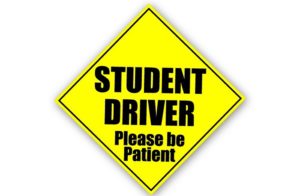 Software customers must learn how to use their new products before they can achieve their goals. Most companies, however, do a poor job of managing the customer’s natural learning curve. How we acquired driving skills years ago is a more effective training strategy.
Software customers must learn how to use their new products before they can achieve their goals. Most companies, however, do a poor job of managing the customer’s natural learning curve. How we acquired driving skills years ago is a more effective training strategy.
Unconscious competence
How often do you get to work but are unable to recall the details of your commute? Driving to the office requires thousands of decisions (brake, speed up, signal, change lanes), but you scarcely pay attention to the minutiae. Instead you may recall a compelling story on the radio or seeing a hot air balloon taking flight above the morning mist.
It’s a perfect example of how the brain works. After sufficient time and many repetitions, our subconscious learns. The brain then automatically offloads routine work from our conscious to our subconscious, allowing us to focus on the more interesting things.
Neuroscientists say this type of learning involves two forms of processing: System 1 and System 2.[1]
System 1 is our reflexive half, comprising about 95% of our neural activity. Dominated by impulse, intuition and emotion, System 1 is incredibly fast and powerful. Our subconscious is highly efficient under arousal and insensitive to cognitive load, meaning it can multi-task easily, even under the most demanding circumstances. But System 1 is simple and rules-driven. It learns slowly and cannot deal with nuance.
System 2 is our reflective half, logical and deliberative, the part that makes us distinctively human. It integrates multiple forms of information, its neural structures our ultimate evolutionary achievement. System 2 learns quickly and deals effectively with abstraction, but it’s also limited. Having relatively few cognitive resources, it processes slowly and is easily overwhelmed.
Becoming thoroughly proficient in a skill involves a subtle shift from System 2 to System 1. Learning occurs at the microscopic level where repeated neuron firings lead to chemical changes in the synapses between them, thereby storing new information.[2] Dendrites later form more permanent connections between neurons, increasing processing speed and efficiency.[3] As our brain slowly and automatically rewires itself, what was once conscious effort becomes something we do habitually.
Mastering complex machines
 Remember learning to drive? You began as an anxious teenager, intent on winning your independence. You attended the classroom phase of driver’s education to learn the rules of the road. You then got behind the wheel, some days with a nervous parent at your side and others alongside a battle-hardened driving instructor. After many hours (and occasionally after experiencing startling close calls), you got the feel for it and became more confident. Eventually, driving became second nature. At a later time you may have taken an advanced class, such as defensive driving, to further hone your skills.
Remember learning to drive? You began as an anxious teenager, intent on winning your independence. You attended the classroom phase of driver’s education to learn the rules of the road. You then got behind the wheel, some days with a nervous parent at your side and others alongside a battle-hardened driving instructor. After many hours (and occasionally after experiencing startling close calls), you got the feel for it and became more confident. Eventually, driving became second nature. At a later time you may have taken an advanced class, such as defensive driving, to further hone your skills.
This approach to driver’s education has served us well for decades. Given relatively low fatality rates (1.12 deaths per 100 million vehicle miles traveled)[4], this training method, which systematically builds knowledge, skills and good habits, has proven its value.
Software products often rival automobiles in their complexity, yet many companies fail to educate their customers in the same manner. Most firms adopt the “dip insertion” method—immerse the customer in the font of knowledge during a single training session and then later question why they struggle.
Instead, companies should apply lessons learned from driver’s education:
- Phase 1: Build Knowledge. Describe product operation, features and benefits. Demonstrate and answer questions.
- Phase 2: Build Skills. Get the customer behind the wheel. Give them multiple, job-relevant tasks, allowing them to repeatedly fail and learn from their mistakes. Be patient and provide continuous feedback, coaching through the challenges. Recognize and reward successes.
- Phase 3: Build Habits. Monitor usage closely and provide assistance until skills plateau at high levels. Identify and share suggestions for obtaining results faster and easier along the way. Encourage using features the customer has yet to discover. Continue to recognize and reward skills refinement.
While personal attention is ideal and helps to build trust, most software companies can’t afford to thoroughly train each and every user. But teaching doesn’t always have to be done manually. Using a thoughtful progression of in-product messaging, videos, e-mail campaigns, online communities and “gamification,” companies can lighten, and in some cases, eliminate the training burden.
Our brains require a great deal of time and repetition to master any skill. If we train customers right and remain patient, even complex software tasks, just like learning to drive, can eventually become second nature.
Sources:
[1] Kahneman, D., & Frederick, S. (2002). Representativeness revisited: Attribute substitution in intuitive judgment. In T. Gilovich, D. Griffin, & D. Kahneman (Eds.), Heuristics and biases: The psychology of intuitive judgment (pp. 49–81). New York, NY: Cambridge University Press.
[2] O’Reilly, R. C., Munakata, Y., Frank, M. J., Hazy, T. E., and Contributors (2012). Computational Cognitive Neuroscience. Wiki Book, 1st Edition. URL: http://ccnbook.colorado.edu
[3] Segal, M. (2004) History of Neuroscience: Dendritic Spines and Memory, IBRO History of Neuroscience http://www.ibro.info/Pub/Pub_Main_Display.asp?LC_Docs_ID=3534 Accessed: 9/21/2016
[4] 2015 Motor Vehicle Crashes: Overview. Traffic Safety Facts Research Note, August 2016, U.S. Department of Transportation, National Highway Traffic Safety Administration. Published by NHTSA’s National Center for Statistics and Analysis; DOT HS 812 318.
